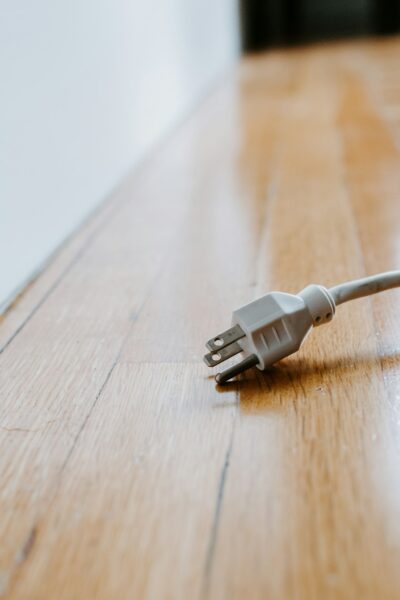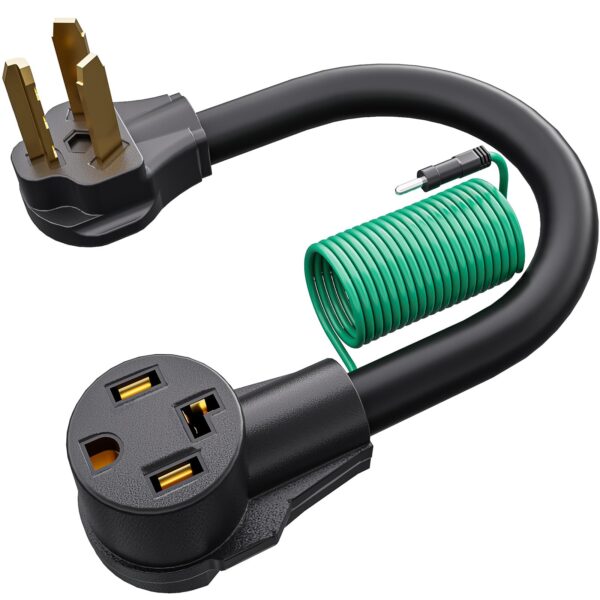Moving into a new home often brings surprises—not all of them pleasant. Imagine this: you’ve just bought a modern dryer, only to find your laundry room outlet was designed in the pre-1997 era. Your shiny new dryer has a 4-prong plug, but your home has a 3-prong outlet. Thankfully, there’s no need for expensive rewiring or an electrician callout. Enter the 4-prong to 3-prong dryer adapter—a simple, cost-effective solution for bridging the gap between old wiring and modern appliances.
Before 1996, homes had 3-slot dryer outlets, which lacked a dedicated ground wire. In response to evolving electrical safety standards, the National Electrical Code updated its regulations to require 4-slot outlets with a separate ground line. This change makes newer appliances safer but creates headaches for homeowners with older outlets who want to use modern dryers. This is where the adapter comes in, saving the trouble (and cost) of replacing cords or rewiring your walls.

The 4-prong to 3-prong dryer adapter is as user-friendly as it is practical. Here’s how to use it:
With this setup, all the poles of your 4-prong plug are accounted for, ensuring proper functionality and safety.
When choosing an adapter, it's worth noting its build quality, capacity, and features. Here’s a breakdown of the essentials:
| Feature | Specification | Benefit |
|---|---|---|
| Power Capacity | Up to 7,500 watts, 30 amps | Handles demanding dryer operations with ease |
| Cord Length | 1.5 feet | Makes connections convenient without excess slack |
| Material | 10-gauge copper wire, 600V insulation | Ensures durability and safety |
Some reputable adapters, like those by Certified Appliance Accessories®, also come with a 5-year warranty, adding peace of mind and showcasing brand reliability.
While the adapter is a game-changer for convenience, safety should always be the top priority. Follow these expert tips to ensure your setup is secure and code-compliant:
If you're unsure about any part of the installation, consult a professional or your dryer’s user manual.
One of the standout reasons to opt for a 4-prong to 3-prong adapter is that it’s a big win for your budget. Rewiring an outlet can cost hundreds of dollars, while these adapters are often priced under $30. Plus, the installation process is straightforward enough for most DIY enthusiasts—no special tools required.
For those who like to plan ahead, consider that some new dryers are sold without cords, allowing you to choose between a standard 3-prong or 4-prong cord based on your home’s setup. But for homes with 3-slot wall outlets, the adapter remains an easy fallback option.
Have you faced the 3-prong vs. 4-prong outlet challenge in your home? Share your experience in the comments below—your tips could help others navigate this common hiccup. Or, if you’ve tried an adapter, let us know your thoughts! Together, we can help each other tackle tricky home projects with ease.

Kasonic-Adapter-10-30P-14-30R-Receptacle/dp/B0CH2F7ZD6
As you can see, finding the right adapter can really make that transition to your new home so much smoother, sparing you the headache and expense of electrician visits. If you're like us and love tackling practical home improvements or just want inspiration for your next DIY project, be sure to follow us! Check out our boards on Pinterest for more handy home hacks, and catch behind-the-scenes glimpses of our projects on Instagram. For up-to-the-minute updates and engaging discussions, join us on X (formerly Twitter) and become part of our community on Facebook. We'd love to connect and hear how you solve your home challenges!
Are prong adapters safe for electrical use? It is usually inadvisable to use plug adapters when your plug and outlet configurations do not align. This is because adapters can fail to provide a grounding pathway, increasing the risk of electrical shocks, fires, and other hazards.
To check if an outlet is grounded, you can use a tester by connecting it to the cover plate screw. If the box is grounded, the tester will light up. Generally, a three-prong adapter can be used safely if plugged into a properly grounded outlet and the circuit can handle the electrical load. However, they should not serve as a permanent solution.
For homes constructed around the mid-1990s, the National Electric Code mandated the use of 3-slot dryer outlets. However, new constructions and conversions from gas to electric dryers now require 4-slot outlets to be installed, mainly due to enhanced safety standards.

Immerse yourself in architecture’s most boundary-pushing ideas—where innovative home improvements meet visionary urban developments. Discover new building techniques, materials, and creative concepts that are redefining how we shape our spaces on a global scale.